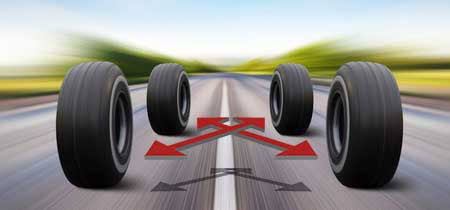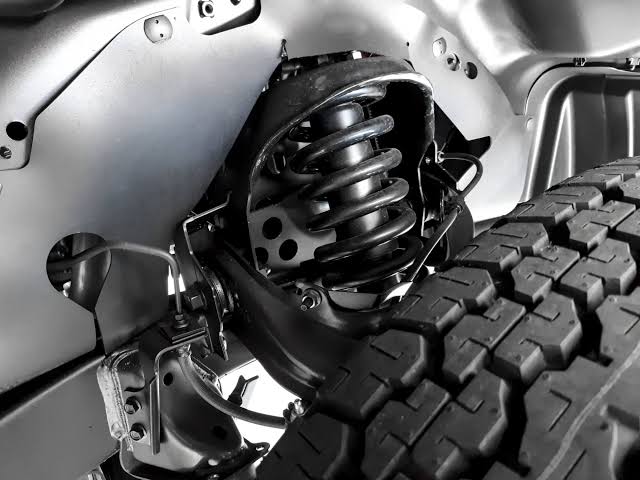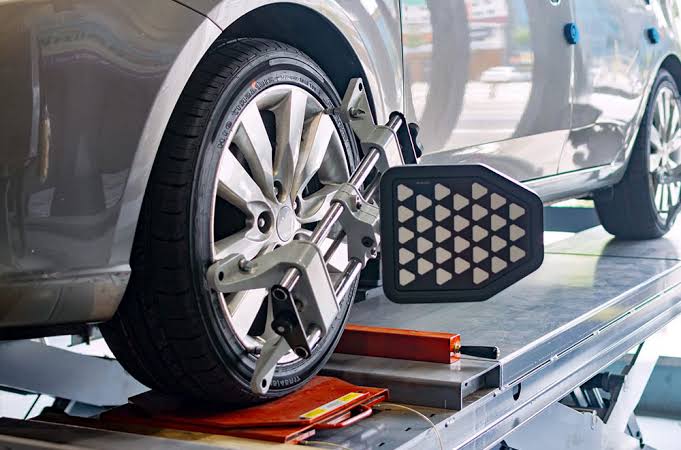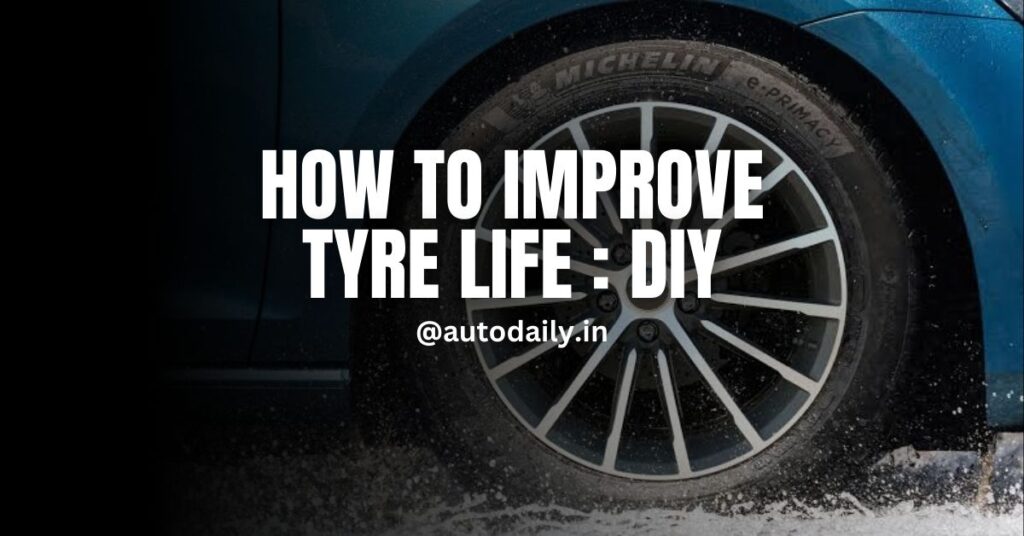How Can I Make My Tires Last Longer? | 11Ways to Improve Tire Life
The majority of vehicle owners are unaware of how much tires affect a car’s performance. The only moving part connecting the car to the road is the tire. It’s a tire that provides a smooth ride even on winding and uneven roads. The tires are the most important part of a car. Even so, many motorists are still unaware of the need to maintain their tires. It is not wise to ignore the tire’s ageing signals. Thus, we have devised a few suggestions for increasing the tire’s life. One thing that every car owner should know is how long tires last. It is therefore advised that you replace your tires at the appropriate period to guarantee your safety.
1. Proper Tire Inflation

Proper tire inflation is paramount to maximizing the lifespan of your car’s tires. Maintaining the correct tire pressure ensures optimal contact with the road surface, promoting even wear and efficient fuel consumption. Underinflated tires increase rolling resistance, causing them to wear out faster on the edges. Conversely, overinflated tires reduce the contact patch, leading to accelerated wear at the center of the tread. To determine the ideal tire pressure, consult your vehicle owner’s manual or the placard located on the driver’s side door jamb. Regularly check tire pressure using a reliable gauge, preferably when the tires are cold, as driving heats up the air inside, resulting in inaccurate readings. Make adjustments as necessary, especially before long trips or when carrying heavy loads. By adhering to proper tire inflation guidelines, you not only extend tire life but also enhance driving safety and vehicle performance.
2. Driving Habits
Your driving habits significantly influence the longevity of your car tires. Aggressive driving behaviors such as rapid acceleration, hard braking, and sharp cornering exert excessive stress on tires, accelerating tread wear and reducing their lifespan. By adopting a more conservative driving style characterized by smooth acceleration, gradual braking, and gentle steering inputs, you can minimize tire wear and extend their service life. Additionally, maintaining a safe following distance from other vehicles reduces the need for sudden stops, alleviating strain on the tires. Avoiding potholes, rough roads, and debris whenever possible also helps preserve tire integrity. By cultivating mindful driving habits, you not only save on tire replacement costs but also enhance road safety and reduce your environmental footprint by improving fuel efficiency.
3. Regular Tire Rotation

Implementing a regular tire rotation schedule is crucial for preserving tire tread life and maintaining balanced handling characteristics. As tires wear at different rates depending on their position on the vehicle, rotating them at specified intervals ensures uniform tread wear across all four tires. Common rotation patterns include front-to-back, rearward cross, and “X” pattern rotations, with the specific method varying based on whether your vehicle is front-wheel drive, rear-wheel drive, or all-wheel drive. Consult your vehicle’s manual or a trusted mechanic to determine the appropriate rotation pattern and interval for your specific vehicle. Typically, tire rotation is recommended every 5,000 to 7,500 miles, or during every other oil change service. By adhering to a consistent rotation schedule, you optimize tire longevity, promote vehicle stability, and minimize the risk of uneven wear patterns that can compromise safety.
4. Routine Suspension Check

The suspension is intimately linked to your tires. A problem with the suspension system has an immediate impact on the tire’s condition. To guarantee the longevity of your tires, getting a routine suspension inspection would be beneficial.
5. Wheel Alignment

Wheel alignment plays a pivotal role in ensuring even tire wear and preserving overall vehicle stability and handling. Misaligned wheels can lead to irregular tire wear patterns, including excessive inner or outer tread wear, feathering, or cupping, all of which shorten tire lifespan and compromise driving safety. Common causes of wheel misalignment include hitting potholes, curb impacts, and worn suspension components. Signs of misalignment include steering wheel vibration, uneven tire wear, and the vehicle pulling to one side while driving. It’s advisable to have your vehicle’s wheel alignment checked annually or whenever you notice any of these symptoms. A professional alignment service involves adjusting the angles of the wheels to manufacturer specifications, including toe, camber, and caster angles, restoring proper alignment geometry. By investing in regular wheel alignment, you not only extend tire life but also improve fuel efficiency, enhance vehicle handling, and ensure a smoother, safer driving experience.
6. Avoiding Overloading
Overloading your vehicle beyond its designated capacity can have detrimental effects on tire longevity and overall safety. Excessive weight places undue stress on tires, leading to accelerated wear, increased heat buildup, and heightened risk of tire failure. To prevent overloading, familiarize yourself with your vehicle’s maximum load capacity, specified in the owner’s manual or on a placard typically located on the driver’s side door jamb or inside the glove compartment. When transporting cargo or passengers, distribute weight evenly throughout the vehicle and avoid exceeding the recommended limits. Utilize rooftop carriers, trailers, or additional vehicles for oversized or heavy loads that surpass your vehicle’s capacity. Regularly check tire pressure and inspect tires for signs of damage or excessive wear, particularly when carrying heavy loads for extended periods. By adhering to weight limits and practicing responsible load management, you safeguard tire integrity, optimize vehicle performance, and ensure a safer driving experience for yourself and others on the road.
7. Proper Storage
Proper storage is essential for preserving tire quality and extending their lifespan, particularly for seasonal tires not in use year-round. Exposure to sunlight, extreme temperatures, and moisture can degrade tire rubber over time, leading to premature deterioration and diminished performance. To protect tires during storage, clean them thoroughly with mild soap and water to remove dirt, brake dust, and road grime. Allow tires to dry completely before storage to prevent mold and mildew growth. Store tires in a cool, dry, and well-ventilated area away from direct sunlight, heat sources, and harsh chemicals. Ideally, elevate tires off the ground using tire racks or storage platforms to prevent flat-spotting and distortion. Consider using tire covers or wrapping tires in plastic bags to shield them from environmental elements and UV radiation. Periodically inspect stored tires for signs of damage, such as cracks, bulges, or sidewall damage, and rotate them if necessary to prevent uneven compression. By implementing proper storage practices, you safeguard tire integrity during periods of non-use and ensure optimal performance when reinstalled on your vehicle.
8. Regular Inspections of Tire
Conducting regular tire inspections is imperative for identifying potential issues early on and maximizing tire lifespan. Visual inspections should encompass checking tire tread depth, sidewall condition, and overall tire condition for signs of wear, damage, or irregularities. Utilize a tread depth gauge to measure tread depth regularly, aiming to maintain adequate tread depth for optimal traction and safety. Look for signs of uneven tread wear, such as cupping, feathering, or scalloping, which may indicate alignment or suspension issues requiring attention. Inspect the tire sidewalls for cuts, bulges, or punctures that could compromise tire integrity and safety. Additionally, monitor tire pressure regularly using a reliable pressure gauge and adjust as needed to ensure proper inflation levels. Incorporating these routine inspections into your vehicle maintenance regimen allows you to address potential issues promptly, prolong tire lifespan, and maintain optimal driving performance and safety.
9. Choosing the Right Tires

Selecting the appropriate tires tailored to your vehicle, driving conditions, and intended use is crucial for maximizing tire longevity and performance. Consider factors such as tire size, load capacity, speed rating, and tread pattern when choosing tires to ensure compatibility with your vehicle specifications and driving preferences. Determine whether you require all-season tires for versatile performance in varied weather conditions, summer tires for enhanced warm-weather traction and handling, or winter tires for superior grip on snow and ice. Evaluate treadwear ratings and traction grades to gauge tire durability and performance characteristics. Consult with tire professionals or refer to manufacturer recommendations to identify the most suitable tire options for your vehicle. Additionally, prioritize tire brands known for quality construction, durability, and reliability to invest in long-lasting tires that deliver optimal performance and safety throughout their lifespan. By making informed tire choices tailored to your driving needs and vehicle requirements, you enhance driving confidence, minimize maintenance costs, and maximize overall driving satisfaction.
10. Tire Maintenance Tips
Implementing proper tire maintenance practices extends beyond routine inspections and inflation checks. Additional tire maintenance tips can further optimize tire longevity and performance. When cleaning tires, use mild soap and water or specialized tire cleaners to remove dirt, brake dust, and road debris without harsh chemicals that may degrade tire rubber. Avoid parking near sharp objects or abrasive surfaces that could puncture or damage tires, opting for designated parking areas whenever possible. Periodically clean brake dust buildup from wheels and rims to prevent corrosion and maintain optimal brake performance. When encountering potholes, debris, or rough roads, exercise caution and avoid excessive impacts to minimize potential tire damage. Incorporate these tire maintenance tips into your regular vehicle care routine to preserve tire integrity, prolong tread life, and ensure safe and reliable performance on the road.
11. Professional Tire Maintenance
In addition to regular DIY tire maintenance tasks, scheduling professional tire inspections and maintenance services is essential for ensuring optimal tire performance and longevity. Trained technicians possess the expertise, specialized tools, and diagnostic equipment to conduct comprehensive tire assessments, identify potential issues, and perform necessary adjustments or repairs. Professional tire maintenance services may include wheel alignment to correct misaligned wheels and promote even tire wear, tire balancing to minimize vibrations and ensure smooth driving, and tire rotation to redistribute wear for balanced tread wear patterns. Additionally, professionals can perform tire repairs or replacements as needed, addressing punctures, sidewall damage, or worn-out tires to maintain vehicle safety and performance standards. Schedule routine tire maintenance appointments in accordance with manufacturer recommendations or as advised by your trusted automotive service provider. By entrusting your tire care to qualified professionals, you gain peace of mind knowing that your tires receive expert attention, maximizing their lifespan, and optimizing your vehicle’s performance and safety on the road.
12. Follow User Manual
To give their cars a more eye-catching appearance, car owners are increasingly changing the rims and wheels on their vehicles. It is advised that you have it done by a tyre professional. However, it should be avoided. While wide tires could be beneficial, they alter at least one aspect of the vehicle.
Join Us : WhatsApp Channel
FAQs
It’s recommended to check tire pressure once a month, as proper inflation can extend tire life and improve fuel efficiency.
Proper alignment ensures even wear on your tires, extending their lifespan and enhancing vehicle handling and safety.
Yes, rotating tires every 6,000 to 8,000 miles promotes even wear and extends tire life.
Store tires in a cool, dry place away from direct sunlight and ozone-generating sources to prevent premature aging and degradation.
Aggressive driving habits like hard braking and rapid acceleration can accelerate tire wear, so adopting a smoother driving style can help extend tire life.
Adequate tread depth is crucial for traction and handling, so regularly inspecting tread depth and replacing tires when they’re worn helps maximize tire life.
Regular maintenance like tire rotations, alignments, and balancing ensures even wear and optimal performance, thus extending tire life.
Incorrect tire pressure can lead to uneven wear and decreased tire life, so maintaining the manufacturer-recommended pressure levels is essential.
Cleaning tires regularly with mild soap and water removes debris and prevents corrosion, contributing to longer tire lifespan.
Yes, selecting tires suited to your driving habits and environment can enhance traction, handling, and durability, ultimately extending tire life.

